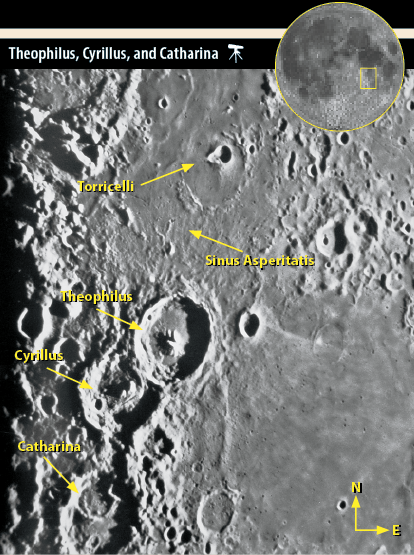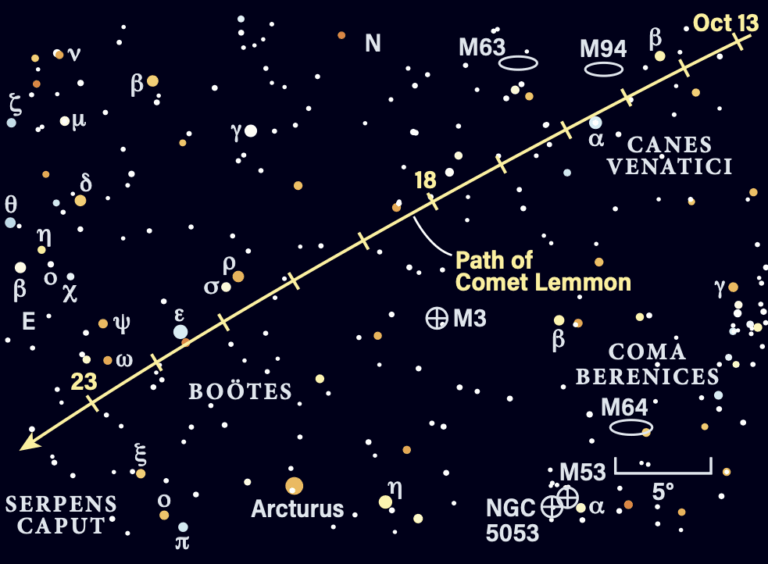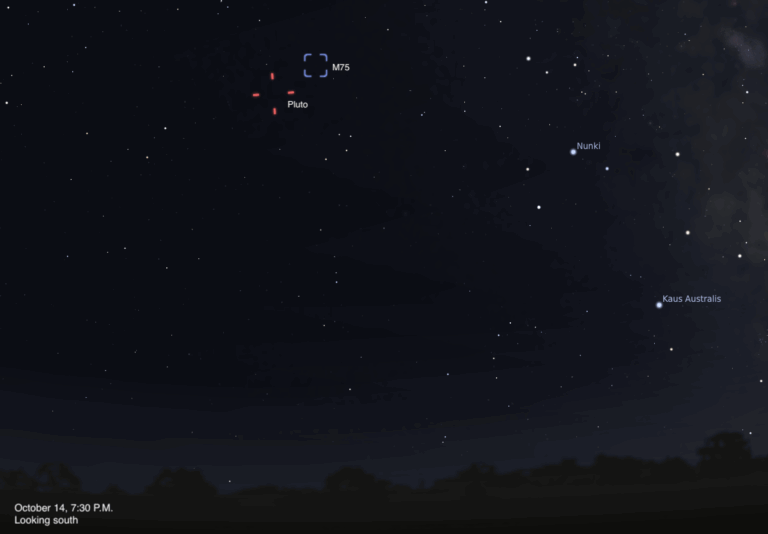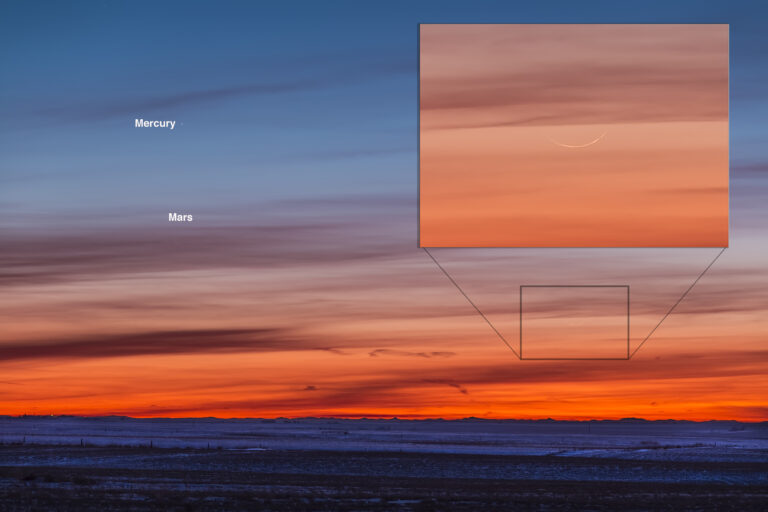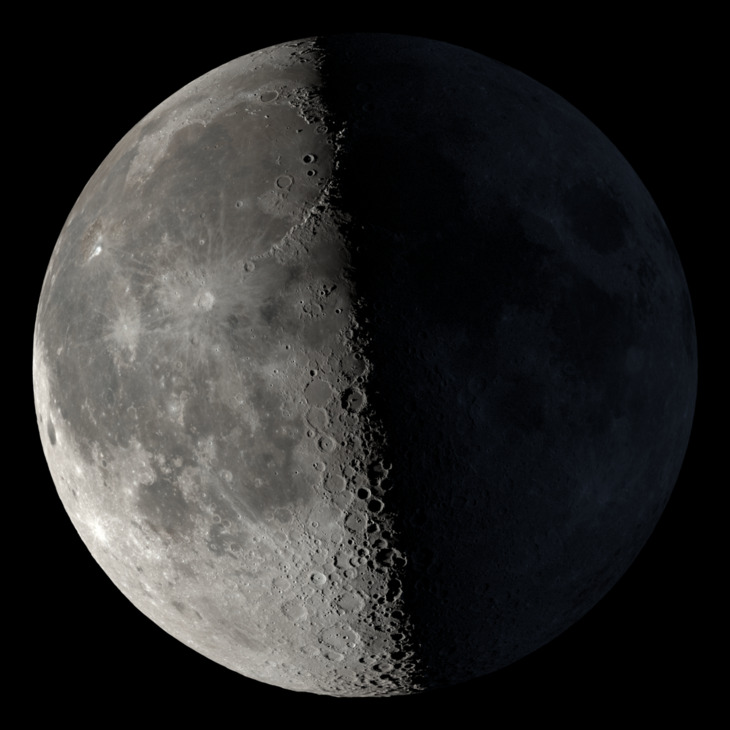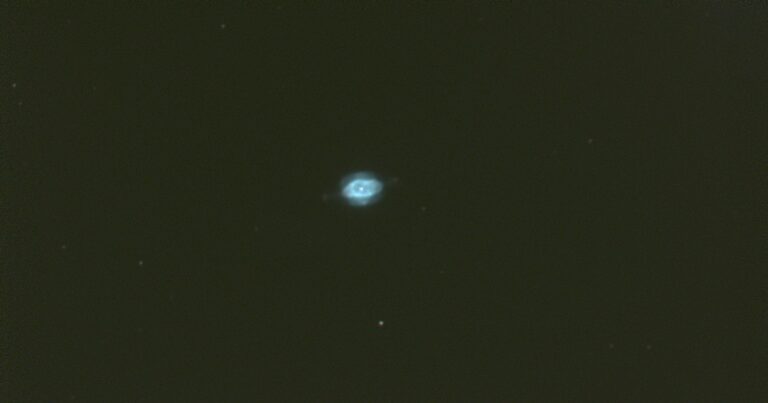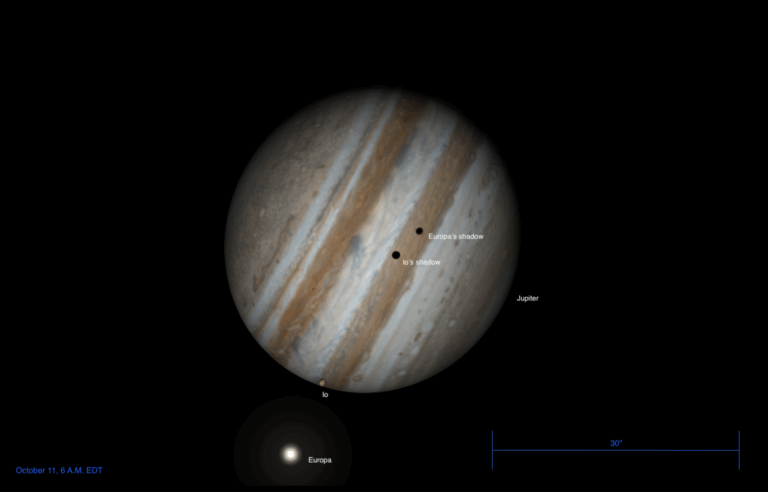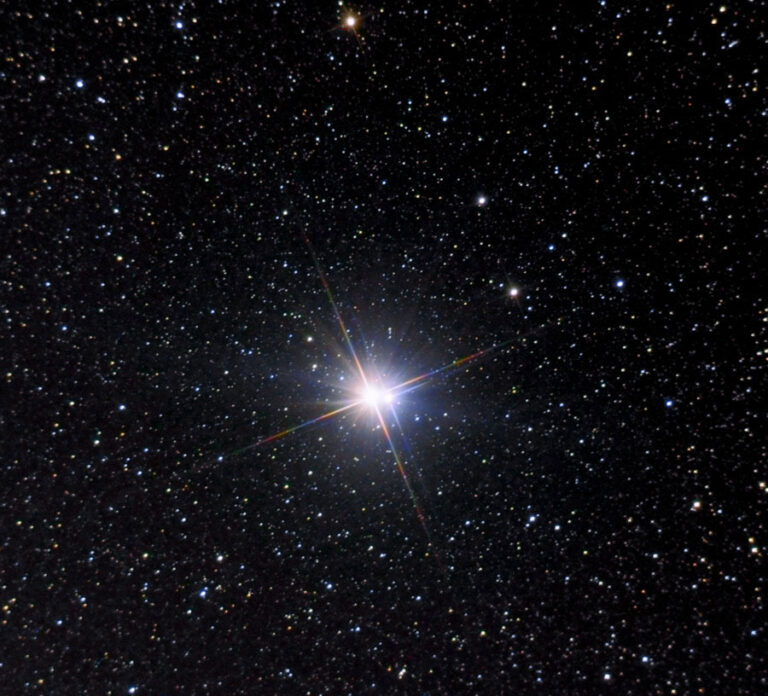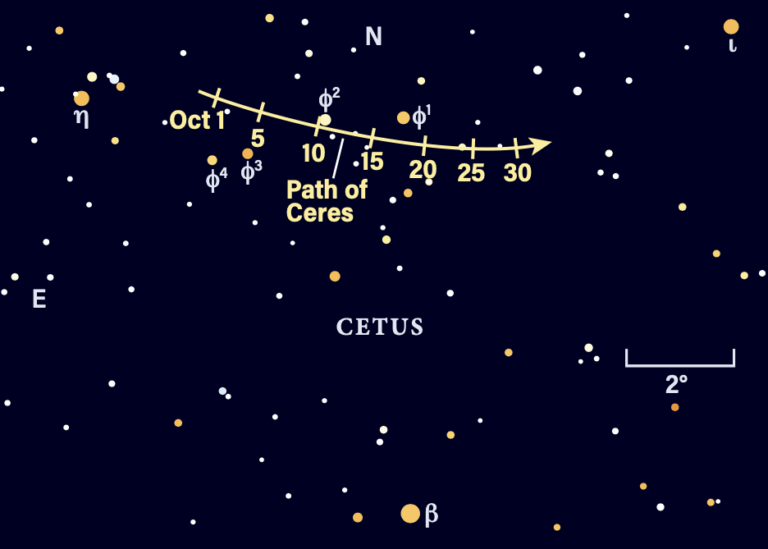Key Takeaways:
But the Moon deserves top billing in January’s sky show. On the 31st, our satellite dives completely into Earth’s umbral shadow, bringing a total lunar eclipse to viewers in much of North America, the Pacific Ocean, Asia, and Australia. This is the first total eclipse since September 2015.
From North America, the eclipse occurs before dawn and delivers better views to those who live farther west. East of a line that runs from the Ohio-Indiana border to New Orleans, the eclipse starts after the onset of twilight and the Moon sets before totality begins. The Full Moon enters Earth’s umbral shadow at 6:48 a.m. EST (3:48 a.m. PST). Within 10 minutes, the lunar orb looks like a giant sugar cookie with a bite taken out of it
The geometry of the Sun, the Moon, and Earth drives itself home during lunar eclipses in twilight. With the Sun just below the eastern horizon before dawn and the eclipsed Moon hanging low in the west, you can almost feel the giant rock you’re standing on casting its shadow all the way to its only natural satellite.
Those in the continent’s western two-thirds can view at least some of totality, which gets underway at 6:52 a.m. CST (4:52 a.m. PST). Totality lasts 76 minutes and can be seen in its entirety west of a line that runs from central North Dakota to New Mexico. The eclipsed Moon hangs among the stars of Cancer the Crab with the Beehive star cluster (M44) 4° to its northwest.
Observers in Northern California, Oregon, and Washington get to witness the concluding partial phases, which wrap up at 7:11 a.m. PST. Fortunately, we don’t have long to wait for the next total lunar eclipse. Earth will cast its shadow on the Moon on July 27 (though this time the eclipse won’t be visible from North America), and again the night of January 20/21, 2019.
Although no planet rises to the level of “super” this month, most will reward your viewing efforts. The evening sky offers the two outermost and dimmest members of the solar system’s family. Despite their faintness, both Uranus and Neptune are within range of binoculars. Neptune lies lower and should be your first target. In early January, the ice giant stands 30° above the southwestern horizon at the end of twilight.
Neptune glows at magnitude 7.9 among the background stars of Aquarius. You can find it near 4th-magnitude Lambda (λ) Aquarii. On the 1st, the planet lies 0.5° southeast of Lambda. By the 31st, Neptune stands 1.1° due east of the star. While binoculars reveal the world as a dim pinpoint, a telescope shows the planet’s blue-gray disk, which spans 2.2″.
Uranus shines brighter and lies farther east, against the backdrop of eastern Pisces. Although the planet is an easy binocular object at magnitude 5.8, Pisces has few bright stars to guide you. Your best bet is to home in on 5th-magnitude Mu (μ) Piscium. Uranus remains nearly stationary during January some 3° north of the star. And no other object in the area shines so brightly.
Uranus stands nearly 60° above the southern horizon as darkness falls. That’s the best time to target the distant world through a telescope. A view at medium power reveals Uranus’ 3.5″-diameter disk and distinct blue-green color.
On January 1, Mars stands 2.6° west of Jupiter and the pair rises more than four hours before the Sun. Mars shines at magnitude 1.5 while Jupiter dazzles at magnitude –1.8. The two straddle Libra’s second-brightest star, magnitude 2.8 Zubenelgenubi (Alpha [α] Librae), which itself is a fine double.
The planets shift eastward relative to the background stars during January, with Mars moving faster in its inner orbit. Watch every morning as their positions change relative to Zubenelgenubi and to each other. On the 2nd, Mars passes 0.6° north of Alpha. And on the 7th, the two solar system worlds stand just 16′ apart. This is the closest they’ve been since September 2004, but they were then just a few degrees from the Sun and invisible. They haven’t been this close and visible since January 1998.
A telescope shows both planets in a single low-power field of view. Mars spans 5″ compared with Jupiter’s 34″. Yet Jupiter lies three times farther away, a testament to its status as a giant planet.
Just four mornings after this fine conjunction, a waning crescent Moon joins the two in a stunning predawn display. On January 11, Mars stands 4.6° south of the Moon while Jupiter lies 2.1° west of the Red Planet. Use binoculars for a close-up view or just enjoy the scene with your naked eye.
Although the planets rise earlier with each passing morning, the gap between the two grows wider. Slowpoke Jupiter remains in Libra all month, while Mars speeds across that constellation and enters Scorpius on the 31st. Having brightened to magnitude 1.2, the Red Planet stands 9° northwest of the Scorpion’s brightest star, magnitude 1.1 Antares. The star’s name literally means “rival of Mars,” and the similarities between their brightnesses and hues this month will help you understand why ancient astronomers made the comparison.
The jovian satellites are also worth a look. You’ll typically see the four brightest — Io, Europa, Ganymede, and Callisto — arrayed beside the planet’s disk, though occasionally one or more will hide in front of or behind Jupiter. A good example of vanishing moons comes January 10. At 5:28 a.m. EST, Io and Europa simultaneously disappear into the giant planet’s shadow. Track the two moons for the half-hour leading up to the eclipse and then watch them fade over several minutes.
You can find Mercury to the lower left of Mars and Jupiter during January’s first three weeks. The innermost planet reaches greatest elongation on the 1st, when it lies 23° west of the Sun and stands 11° high in the southeast 30 minutes before sunrise. It shines at magnitude –0.3, more than a full magnitude brighter than ruddy Antares 11° to its right. A view through a telescope reveals the planet’s disk, which spans 6.7″ and appears 62 percent lit.
Mercury loses altitude each morning. On January 10, it’s still a decent 8° high a half-hour before sunup, but that drops to just 4° by the 20th. Although the planet remains at magnitude –0.3 throughout this period, it becomes progressively harder to see in bright twilight. Its disk also shrinks and becomes more fully illuminated, making telescopic views less appealing.
But you’ll want to be sure to look for Mercury on January 13 because Saturn then lies just 0.6° north of the inner world. You’ll probably need binoculars to spot the magnitude 0.5 ringed world in the bright twilight.
But unlike its neighbor, Saturn climbs higher with each passing day. By the end of the month, the planet appears 10° high in the southeast an hour before sunrise. You should be able to spot it easily among the background stars of Sagittarius. Unfortunately, Saturn’s low altitude means it won’t look that great through a telescope. You’re better off waiting a month or two for it to return to glory.
The last of the solar system’s major planets remains out of sight all month. Venus reaches superior conjunction January 8/9, when it passes on the opposite side of the Sun from Earth. Look for it to reappear low in the evening sky in late winter.
If there’s a best face to the Moon, the thick waxing crescent phase has to be it. Large waves seem to swell across smooth seas, big craters take your breath away, and small impacts stand out by casting long shadows. On the evening of January 22, the Serpentine Ridge grabs your attention as a couplet of light and darkness snaking across Mare Serenitatis (Sea of Serenity) north of the equator. Although it looks like a frozen wave rippling through the lava, it’s actually a compression feature formed when the mare lavas contracted.
Scanning southward, you’ll cross Mare Tranquillitatis (Sea of Tranquility) before running into the crater Theophilus. This 60-mile-wide, sharp-edged impact feature presents a complex jumble of central peaks and slumped terraces on the rim’s inside slopes. Just to its south lies Cyrillus. Although this crater is the same size as Theophilus, its softer edges imply an older age.
Still farther south rests ancient Catharina. Its lower, rounded rim signifies a longer history of pummeling. The impact that created Theophilus spread a rugged debris apron north into the Sea of Tranquility. Selenographers named this bleak landscape Sinus Asperitatis (Bay of Roughness).
The unusual double crater Torricelli lies in this bay. Planetary scientists think its weird shape arose from a single glancing blow instead of two unrelated events. A fraction of a second after the initial impact, what was left of the projectile blasted through the back wall of the developing main crater. Torricelli — named after the Italian scientist who invented the mercury barometer — sits off-center in a low-profile, battered bowl filled to the brim with solidified lava.
Although the Quadrantids rank among the year’s strongest showers, the 2018 edition likely won’t be memorable because of the January 1 Super Moon. At the peak before dawn on the 4th, bright moonlight will wash out faint meteors and make the brighter ones less impressive. The hourly rate can top 100 meteors in good years, but observers may be lucky to see 20 this year.
Observers shouldn’t give up, however. Bright meteors still show up through moonlight, and the nice planet grouping before dawn makes an early morning observing session all the more worthwhile.
Comet PANSTARRS (C/2016 R2) shares the sky with dozens of deep-sky gems sprinkled across the winter Milky Way. It glides past the head of Taurus the Bull during January as it heads north, and it remains on view for most of the night.
A small ball of dust and ice, PANSTARRS simultaneously is out of place and at home. Visually it appears much like a 10- or 11th-magnitude elliptical galaxy, at odds with the sparkling open star clusters and amorphous gas clouds in this area. Yet the fingers of obscuring dust and gas in the background are every bit like the nursery that gave birth to our solar system and its shell of comets, the Oort Cloud.
C/2016 R2 should be within reach of 4-inch telescopes under a dark sky. From the suburbs, you’ll likely need a 10-inch scope to spot it. On a positive note, it should be compact and well-defined, making it a good target at medium or high power.
Astroimagers will want to capture PANSTARRS in this photogenic region near the Hyades and Pleiades (M45) star clusters. Deeper exposures also will record the wisps of galactic dust and gas that thread through the Milky Way’s outer spiral arm. Imagers should skip the first few days of January and the month’s final week when the Moon interferes.
Although the first few months of 2018 don’t show much promise for bright comets, things should pick up this summer. And if predictions hold, Comet 46P/Wirtanen could become visible to the naked eye next autumn.
Asteroid 20 Massalia reached opposition in mid-December, which places it high in January’s evening sky and not far from its peak brightness. Massalia glows at 9th magnitude this month as it treks across eastern Taurus.
Although you might think the asteroid would be difficult to locate among the swarms of faint Milky Way stars, it fortuitously passes in front of the dark clouds of dust and gas in this region. Only a relative handful of stars shines through, leaving the 90-mile-wide asteroid in the open.
Avoid looking for it on the first few and last few nights of the month when the Full Moon lies nearby. Start at 3rd-magnitude Zeta (ζ) Tauri, the star that marks the tip of the Bull’s southern horn.
Take a quick look at the Crab Nebula (M1) 1° to the northwest before targeting 5th-magnitude 114 Tau 1.6° farther west. Just three stars matching Massalia’s brightness reside near the path to 5th-magnitude 109 Tau, which lies 2° west of 114. Your best bet for seeing Massalia move during a single observing session comes the evenings of January 10 and 11, when the asteroid slides 0.2° south of 109 Tau.






